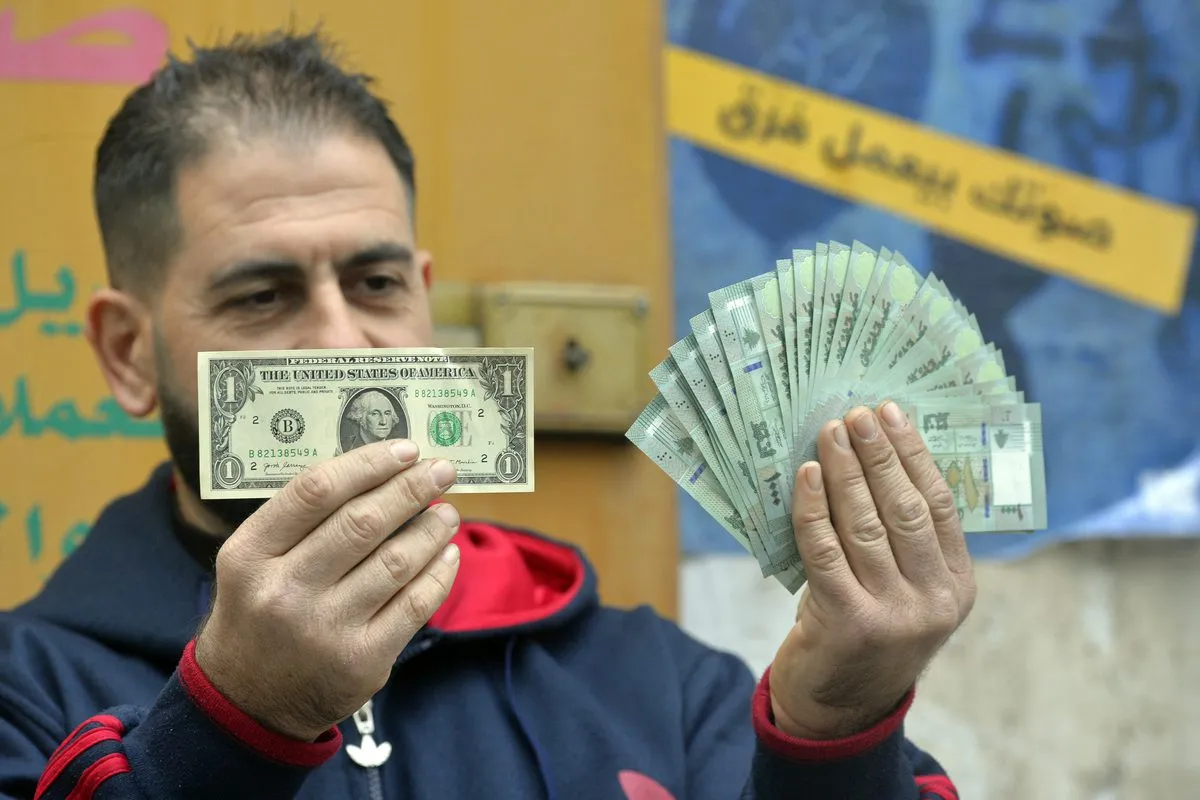Imagine a world where 1 dollar is equivalent to 63,800 of your currency. Horrendous, right? Being the reality of 5 million people residing in Lebanon, you don’t need to quite ‘imagine’ as the struggle continues to rise in complexity.
But what does that mean? And could Egypt be heading there?

Back in October of 2022, 109 million Egyptians woke up to the news that their currency had experienced a significant devaluation against the dollar, rising from an average of 17-18 LE per 1 Dollar to 23 LE overnight. Hence, an equivalent increase in the cost of living and a slow, but sure, deterioration in the quality of life of many Egyptians within the country has become a crisis. However, not many could have foreseen how the Egyptian currency will rapidly evolve into the fastest deteriorating currency globally in the coming months – so much so that 1 Dollar today is equal to 31 LE.
So what led to that decision? And with hindsight, does that mean that the Egyptian currency will continue to experience obscene devaluations in the near future?
Being ‘in debt’ is against the common belief of the general Egyptian public, yet it is not a new notion – existing from the very era of Pharaohs. In fact, Egypt has been in huge debt since almost the second world war due to the country’s grave trade deficit, where its imports largely surpass its exports. This is undeniably problematic because Egypt’s trade deficit exists in significant sectors of the economy and society. A major exception though it is a factor in economical problems is the food sector where Egypt ranks first globally in wheat imports, clothes, industrial equipment, and heavy machinery.
That being said, how has the Egyptian currency managed to maintain a somewhat dignified value against the US dollar for the past 2 decades?

3 sparks: remittances from Egyptians living abroad; foreign relief aid and the tourism sector, with the second being the most important of the 3.
The recipe for the current economic crisis has been long in the making for Egypt – a country historically notorious for its rather lacking financial status globally. In 2016, the Egyptian government sealed a deal with the International Monetary Fund for 12,000,000,000 Dollars in exchange for the Egyptian currency to float freely.
In a matter of weeks, the Egyptian currency halved in value and stark governmental amendments were implemented, including electricity and energy rationing. And while that decision led to the devaluation of the pound, no eminent threat was registered in the Egyptian streets; instead, everyone simply dealt with the financial situation at hand and laughed it off.
Things truly began going south for the North African country when COVID hit. The world went into lockdown. Travel stopped and with that, Egypt’s pride and glory aggravated – tourism. This led to an insurmountable fall in Egypt’s annual FDI and income and to make matters worse, the World Bank had stopped supporting the Egyptian currency and let it settle freely in the global economic markets, leading to its inevitable fall.

As if that weren’t enough, when the Russo-Ukrainian war began in early 2022, the world experienced a menacing shortage of wheat as Ukraine was the main manufacturer. Egypt is the world’s first wheat importer; thus, food elements and other commodities skyrocketed nationally as a direct result of Egypt’s high foreign dependence.
We’ve now reached February of 2023, when the Egyptian government (low on finances) has established a $3,000,000,000 deal with the International Monetary Fund (IMF). This shall be under the condition to yet again allow the forces of supply & demand to determine the value of the Egyptian pound, sending the currency plummeting, with a loss of up to 35% of its value overnight.
While the pound now settles at 31 LE per 1 Dollar, many fear that the worst is yet to come.
As urban inflation witnessed a jump from around 17% in the years prior to IMF involvement to 21% today, causing significant distraught amongst the general public, specifically to the 60% of Egyptians who live below or at the poverty line.
With Egypt being the IMF’s second greatest debtor, less than half of its income spent repaying its debt’s interests and the billions lost in attempts to stabilize the currency at a lower value. Is there any hope Egyptians can hold onto it in the near future??
The answer is, surprisingly, yes!
Egypt has registered a jump in its exports of 23.3% in the past 10 months, generating a whopping 42 dollars, 800, 000, 000. Not only is this increase greatly attributed to the competitive prices of Egypt’s exports, but also due to the industries beginning to see the light of day after all of the IMF investments were placed where they were due.
Additionally, for the first time in quite some time, Egypt is perceived as an attractive investment prospect, with many big companies, including the tech giant, Siemens, allocating substantial amounts to investing in the country. Finally, within the past few months alone, the Egyptian tourism industry has borne witness to a boom, increasing generated revenues within the sector by an indiscernible $5,000,000,000.
So while the economic situation, bordering on a crisis, is placing unspeakable strain on Egyptians, there’s a silver lining because the deeply cultured country has severed a lot in the past years, dealing with years of political unrest from 2011-2016 and thus impacting the financial stability of the country.
Readjusting and getting the country back on its feet will, unfortunately but necessarily take quite some time. It’s important to note the lengths the Egyptian government has gone to during this crisis to ensure the economic maintenance & longevity of Egypt’s low class.
In other words, Egypt isn’t following Lebanon’s steps anytime soon (hopefully).













